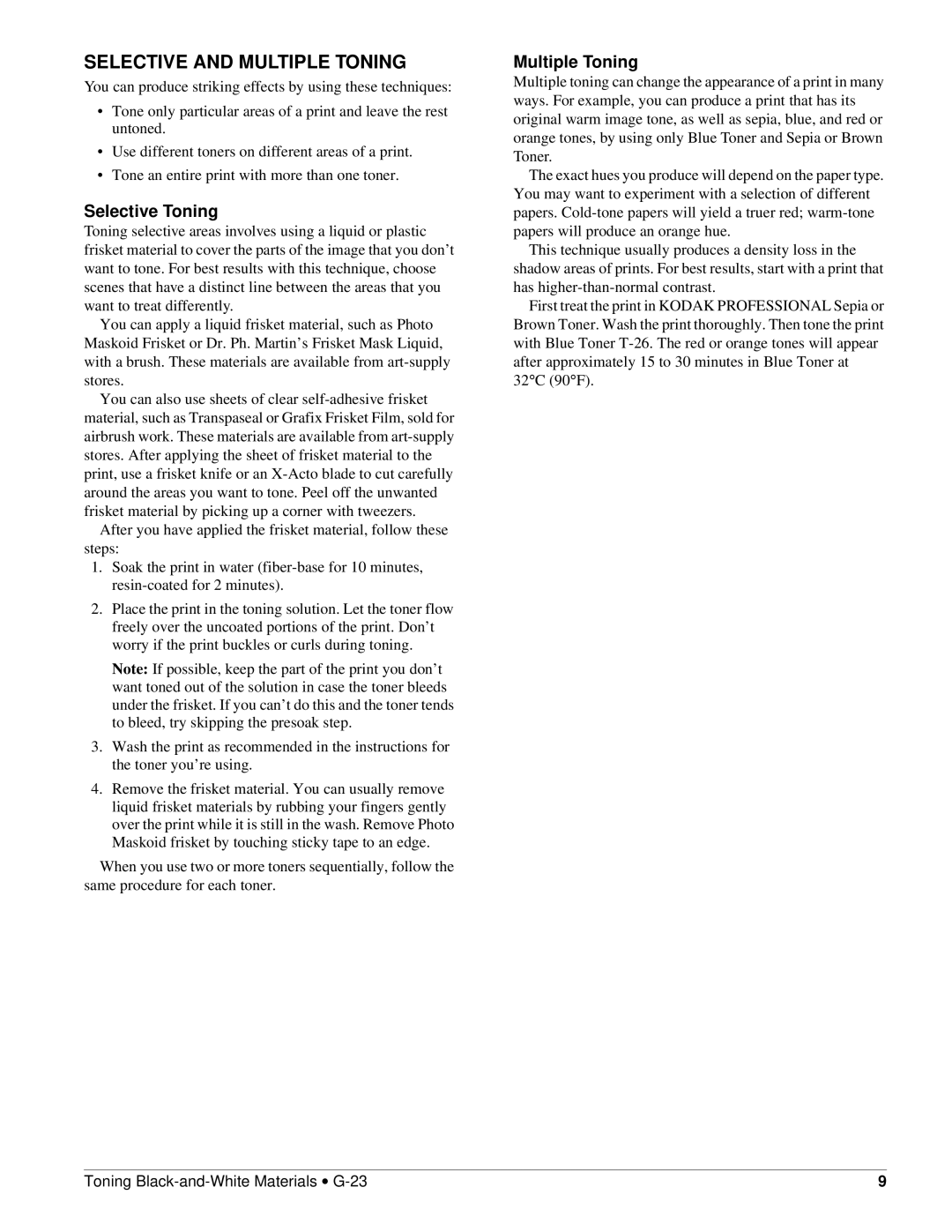SELECTIVE AND MULTIPLE TONING
You can produce striking effects by using these techniques:
•Tone only particular areas of a print and leave the rest untoned.
•Use different toners on different areas of a print.
•Tone an entire print with more than one toner.
Selective Toning
Toning selective areas involves using a liquid or plastic frisket material to cover the parts of the image that you don’t want to tone. For best results with this technique, choose scenes that have a distinct line between the areas that you want to treat differently.
You can apply a liquid frisket material, such as Photo Maskoid Frisket or Dr. Ph. Martin’s Frisket Mask Liquid, with a brush. These materials are available from
You can also use sheets of clear
After you have applied the frisket material, follow these steps:
1.Soak the print in water
2.Place the print in the toning solution. Let the toner flow freely over the uncoated portions of the print. Don’t worry if the print buckles or curls during toning.
Note: If possible, keep the part of the print you don’t want toned out of the solution in case the toner bleeds under the frisket. If you can’t do this and the toner tends to bleed, try skipping the presoak step.
3.Wash the print as recommended in the instructions for the toner you’re using.
4.Remove the frisket material. You can usually remove liquid frisket materials by rubbing your fingers gently over the print while it is still in the wash. Remove Photo Maskoid frisket by touching sticky tape to an edge.
When you use two or more toners sequentially, follow the same procedure for each toner.
Multiple Toning
Multiple toning can change the appearance of a print in many ways. For example, you can produce a print that has its original warm image tone, as well as sepia, blue, and red or orange tones, by using only Blue Toner and Sepia or Brown Toner.
The exact hues you produce will depend on the paper type. You may want to experiment with a selection of different papers.
This technique usually produces a density loss in the shadow areas of prints. For best results, start with a print that has
First treat the print in KODAK PROFESSIONAL Sepia or Brown Toner. Wash the print thoroughly. Then tone the print with Blue Toner
Toning | 9 |
